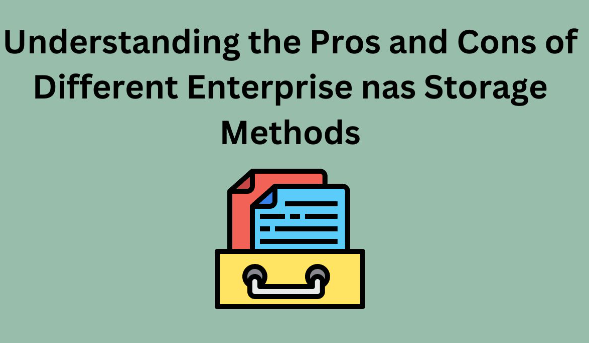
Understanding the Pros and Cons of Different Enterprise nas Storage Methods
For businesses that rely on storing data, it is important to choose an enterprise nas storage method that will meet their needs as well as their budget. With so many options out there, it can be difficult to decide which one is best for you. In this blog post, we’ll discuss the pros and cons of different enterprise nas storage methods so you can make an informed decision.

Direct Attached Storage (DAS)
Direct attached storage (DAS) is a type of storage system where each computer has its own dedicated storage device. This method is typically used in smaller companies with fewer than 50 users or for specific applications such as engineering or medical imaging. The main advantage of DAS is that each individual user can have full control over their own data, ensuring privacy and security. Additionally, because the system is dedicated exclusively to a single computer or application, performance tends to be higher than other types of systems. However, one of the biggest drawbacks of DAS is that scalability can be difficult since all devices must be physically connected in order to access data.
Network Attached Storage (NAS)
Network attached storage (NAS) is another type of enterprise nas storage solution that allows multiple users within a network to access data simultaneously via a specialized file server. NAS systems provide excellent scalability since they are designed to grow as more users need access to files stored in the network. Additionally, NAS systems are more cost-effective than DAS since they use less hardware and require less maintenance. On the downside, NAS systems are more complicated than DAS since they involve multiple components working together in order for them to function properly. Furthermore, performance may suffer if too many users are accessing data at once since the system relies on shared resources.
Cloud Storage
Cloud storage has become increasingly popular due to its convenience and scalability – allowing businesses to easily store and access data from anywhere in the world with an internet connection. Cloud storage also requires little maintenance and setup time compared to other types of enterprise nas solutions. However, cloud storage typically comes with additional costs such as monthly subscription fees or bandwidth charges depending on your usage levels. Furthermore, there may also be security concerns related to storing sensitive data in a public cloud environment as well as potential latency issues due to distance between your physical location and the cloud provider’s servers.
Enterprise NAS (Network Attached Storage) systems are a popular choice for businesses that need to store and manage large amounts of data. There are several different methods of enterprise NAS storage, each with its own set of pros and cons. Here are some of the most common methods and their characteristics:
Scale-out NAS:
This method uses a distributed architecture to scale up the storage capacity and performance of the NAS system. The data is stored across multiple nodes, and as more nodes are added, the system can handle more data and users. The pros of this method are that it is highly scalable and can handle large amounts of data and users. The cons are that it can be complex to set up and manage, and can be expensive.
Scale-up NAS:
This method uses a single storage controller that can be scaled up by adding more storage capacity. The pros of this method are that it is simpler to set up and manage than scale-out NAS, and can be more cost-effective for smaller businesses. The cons are that it can be less scalable than scale-out NAS and may not be able to handle as much data or users.
Unified NAS:
This method combines file and block-level storage in a single system. This allows businesses to store both file-based data, such as documents and multimedia files, and block-based data, such as databases and virtual machines, on the same storage system. The pros of this method are that it can be more efficient and cost-effective than separate file and block storage systems. The cons are that it can be more complex to set up and manage than separate systems.
Object-based NAS:
This method stores data as objects, rather than as files or blocks. Each object contains the data, metadata, and a unique identifier. Object-based NAS systems can be used for storing large amounts of unstructured data, such as multimedia files and emails. The pros of this method are that it is highly scalable and can handle large amounts of unstructured data. The cons are that it can be more complex to set up and manage than file-based or block-based storage systems.
Cloud-based NAS:
This method stores data in the cloud, rather than on-premises. Cloud-based NAS can be used for storing and sharing files and collaborating with remote teams. The pros of this method are that it is highly scalable, can be accessed from anywhere, and can be cost-effective for smaller businesses. The cons are that it may not be suitable for businesses with strict data security and compliance requirements, and can be slower than on-premises storage for large amounts of data.
Conclusion:
When deciding which type of enterprise nas storage is best for your business needs, it’s important to weigh both the pros and cons carefully before making a decision – taking into account factors such as budget constraints, scalability requirements, performance needs, availability requirements, security concerns and more! Ultimately though it pays off when you find an option that meets all your expectations while still being cost-effective! Considering these factors should help guide you towards making the right choice when selecting an enterprise nas solution for your business’s unique needs!